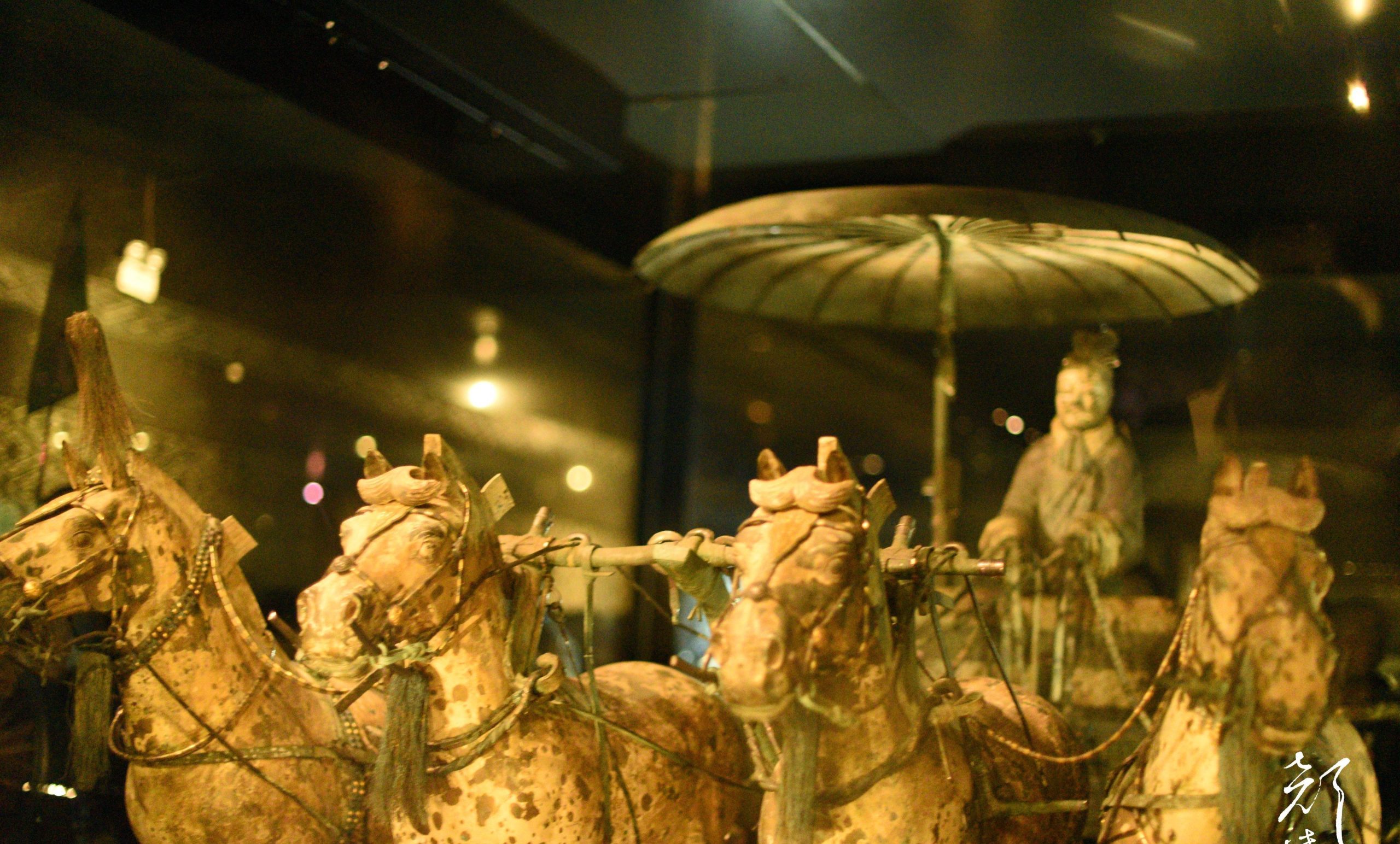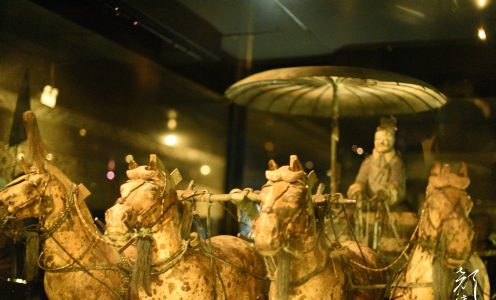The Terracotta Warriors are an iconic symbol of ancient Chinese history and one of the most significant archaeological discoveries of the 20th century. Among the three main pits discovered near the Mausoleum of the First Qin Emperor in Xi’an, China, Terracotta Warriors Pit 2 is particularly intriguing due to its complexity and the variety of military units it houses. This comprehensive article provide a detailed introduction to the discovery, layout, structure, significance, and craftsmanship of Terracotta Warriors Pit 2.
For more information of Terracotta warriors, visit our website click here.
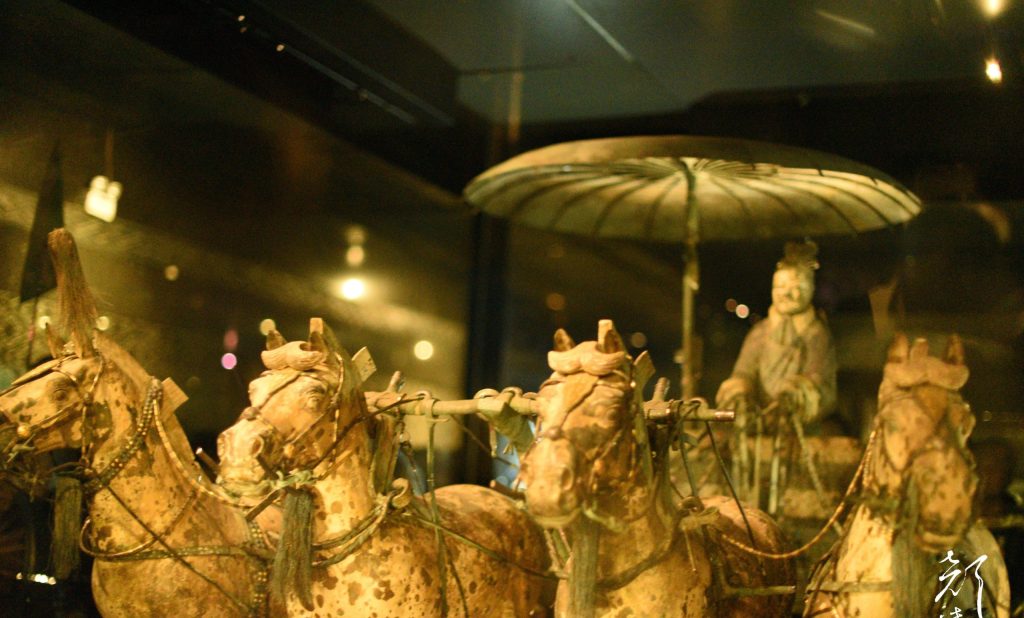
The Discovery of Terracotta Warriors Pit 2
Terracotta Warriors Pit 2 was discovered in April 1976, two years after the initial discovery of Pit 1. Located about 20 meters northeast of Pit 1, Pit 2 is recognized for its more complex and varied military formations. The discovery of Pit 2 added significant depth to our understanding of the Qin Dynasty’s military organization and the scale of the terracotta army.
Initial Discoveries
The initial discovery of Terracotta Warriors Pit 2 came when archaeologists were conducting exploratory digs around Pit 1. Upon unearthing fragments of terracotta warriors and horses, it became evident that another large pit existed. Further excavation revealed that Pit 2 was not only different in structure but also contained a diverse array of military units, making it a unique and vital component of the terracotta army complex.
Excavation Process
Excavation of Terracotta Warriors Pit 2 has been a meticulous and ongoing process. The pit is larger and more complex than Pit 3 but smaller than Pit 1, covering an area of approximately 6,000 square meters. The careful excavation has revealed thousands of warriors, horses, chariots, and weapons, each offering valuable insights into the military strategies and craftsmanship of the Qin Dynasty.
Preservation Efforts
Preservation of the figures in Terracotta Warriors Pit 2 has been a significant challenge due to the delicate nature of the terracotta and the original paint that once adorned the warriors. Conservationists and archaeologists have employed advanced techniques to stabilize and protect these ancient artifacts, ensuring that they remain intact for future generations to study and appreciate.
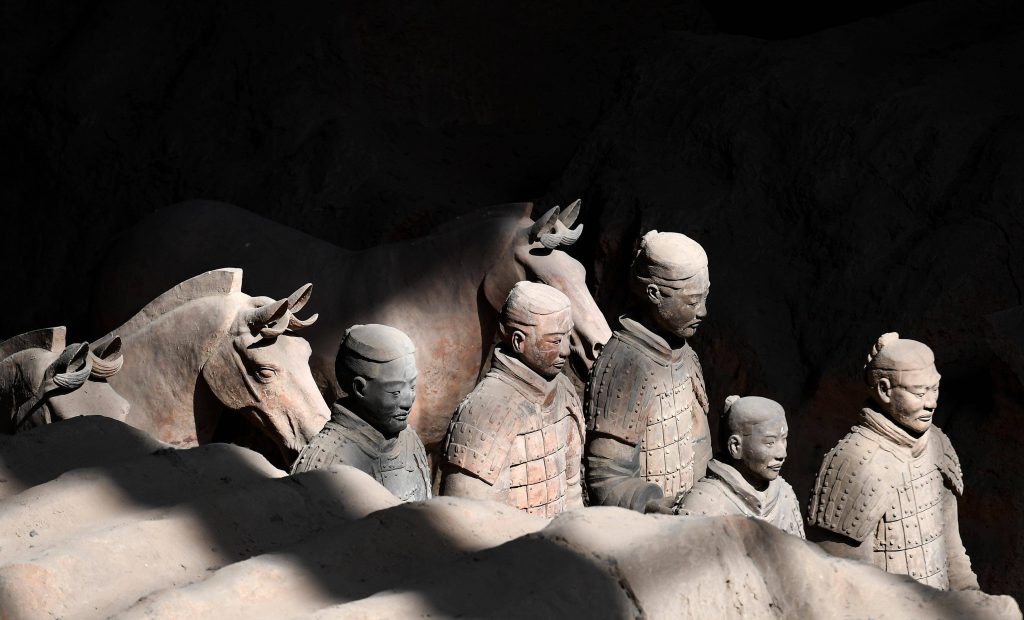
The Layout and Structure of Terracotta Warriors Pit 2
Terracotta Warriors Pit 2 is distinguished by its complex layout and the variety of military units it houses. The pit is divided into four main sections, each representing different types of troops and military formations. This detailed organization reflects the strategic and hierarchical nature of the Qin army.
Section 1: The Vanguard Force
The first section of Terracotta Warriors Pit 2 contains the vanguard force, consisting primarily of archers. There are two types of archers in this section: kneeling archers and standing archers. The kneeling archers are positioned in the front lines, ready to launch a volley of arrows, while the standing archers are positioned behind them. This arrangement allowed the Qin army to unleash a devastating barrage of arrows on their enemies, demonstrating their advanced military tactics.
Kneeling Archers
The kneeling archers in Terracotta Warriors Pit 2 are depicted in a ready-to-shoot position, with their right knee on the ground and their left knee raised for support. Each archer holds a bow, and the attention to detail in their clothing and facial expressions is remarkable. These figures were positioned to maximize their defensive and offensive capabilities, providing a first line of attack against any adversary.
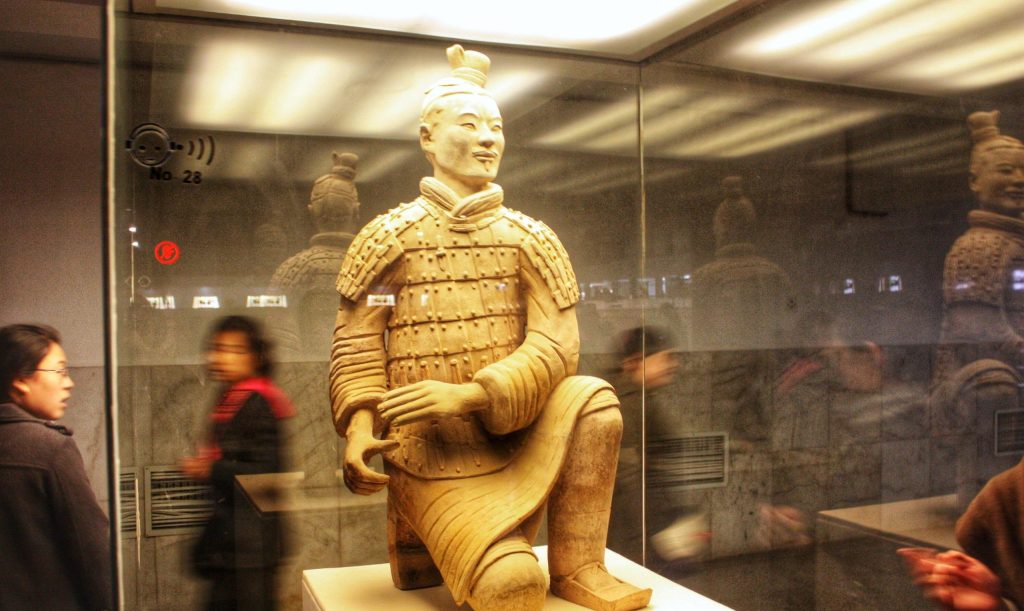
Standing Archers
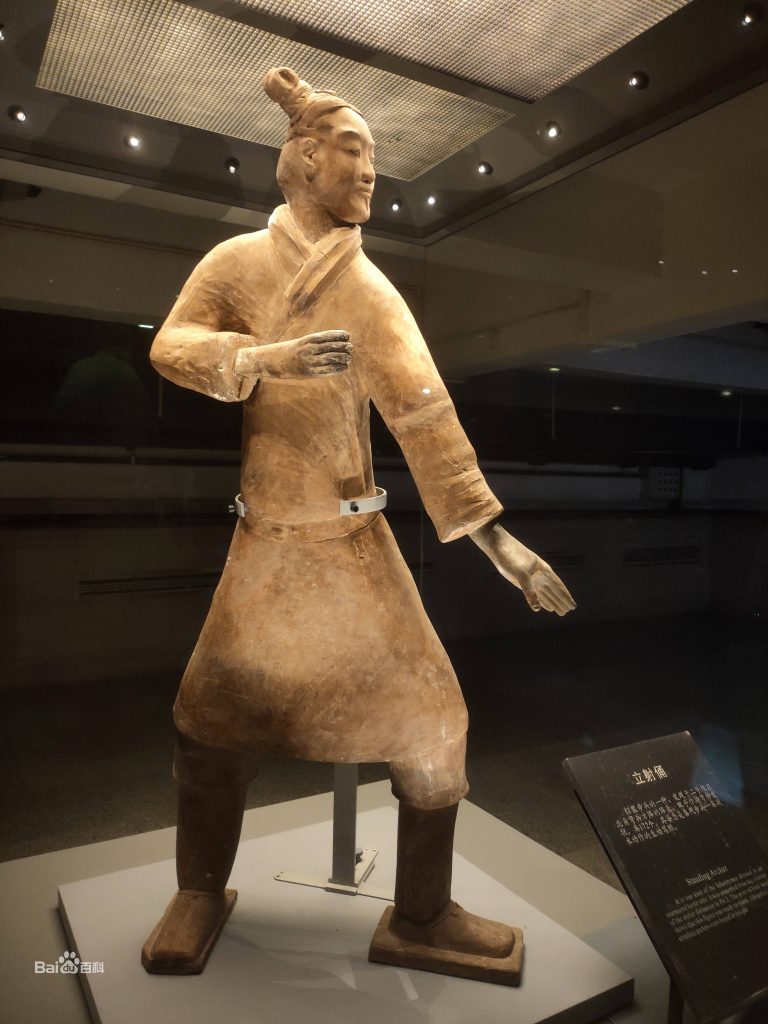
The standing archers are positioned behind the kneeling archers, creating a second line of archery fire. These figures are depicted in a stance that suggests they are about to draw their bows. The strategic placement of the standing archers behind the kneeling ones ensured a continuous barrage of arrows during combat, highlighting the sophisticated military strategies of the Qin Dynasty.
Section 2: The Main Force
The second section of Terracotta Warriors Pit 2 houses the main force, consisting of infantry and cavalry units. This section is divided into several corridors, each filled with rows of soldiers and horses. The infantry soldiers are depicted in various stances, holding weapons such as spears, swords, and shields, while the cavalry units are depicted alongside their terracotta horses.
Infantry Soldiers
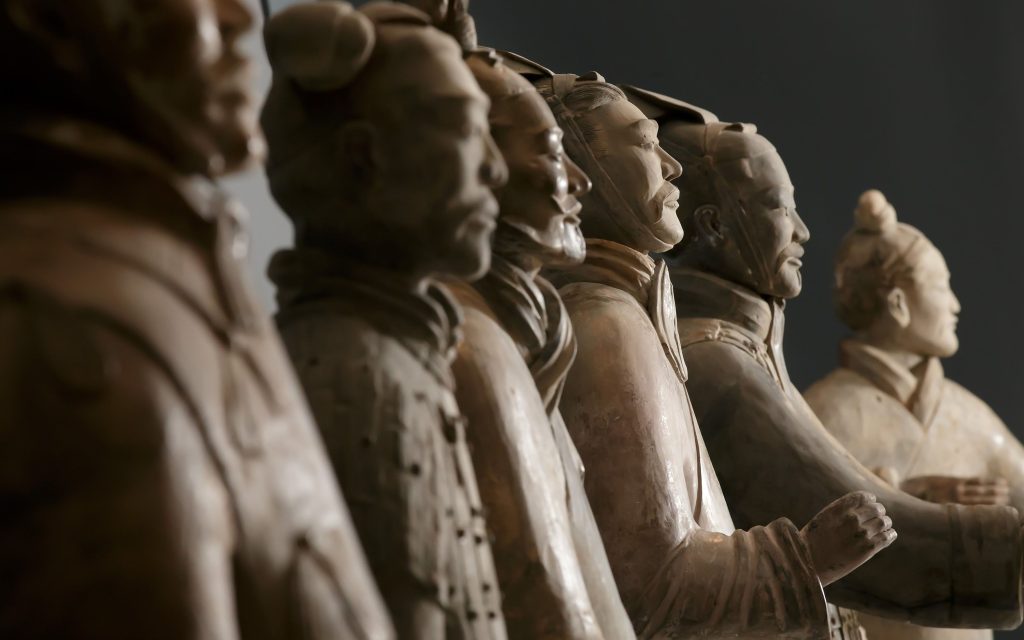
The infantry soldiers in Terracotta Warriors Pit 2 are depicted in a variety of stances, ready for combat. The level of detail in their armor and weaponry is impressive, showcasing the artisans’ craftsmanship. These figures are arranged in tight formations, reflecting the disciplined and organized nature of the Qin army. The infantry was the backbone of the Qin military, providing the main fighting force in battles.
Cavalry Units
The cavalry units in Terracotta Warriors Pit 2 are depicted alongside their horses, ready to charge into battle. The terracotta horses are life-sized and detailed, showcasing the importance of cavalry in the Qin military. These units provided mobility and speed, allowing the Qin army to execute swift and strategic maneuvers during combat. The inclusion of cavalry units in the pit highlights the diverse capabilities and tactical prowess of the Qin army.
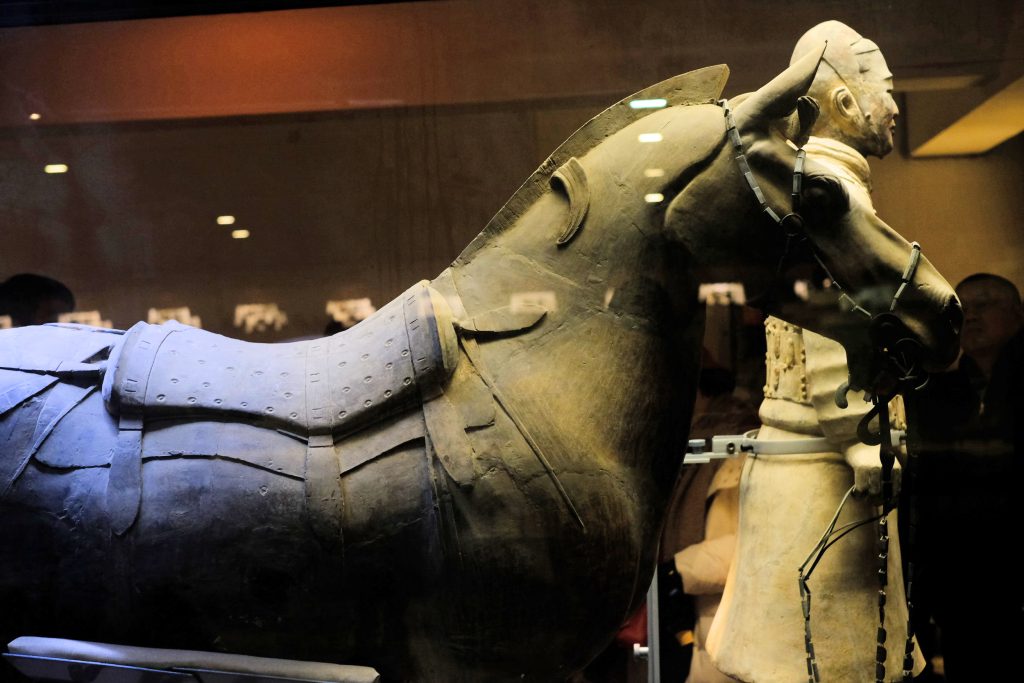
Section 3: The Chariot Force
The third section of Terracotta Warriors Pit 2 contains the chariot force, which is a significant highlight of the pit. This section houses several chariots, each accompanied by charioteers and horses. The chariots were a critical component of the Qin military, providing both offensive and defensive capabilities during battles.
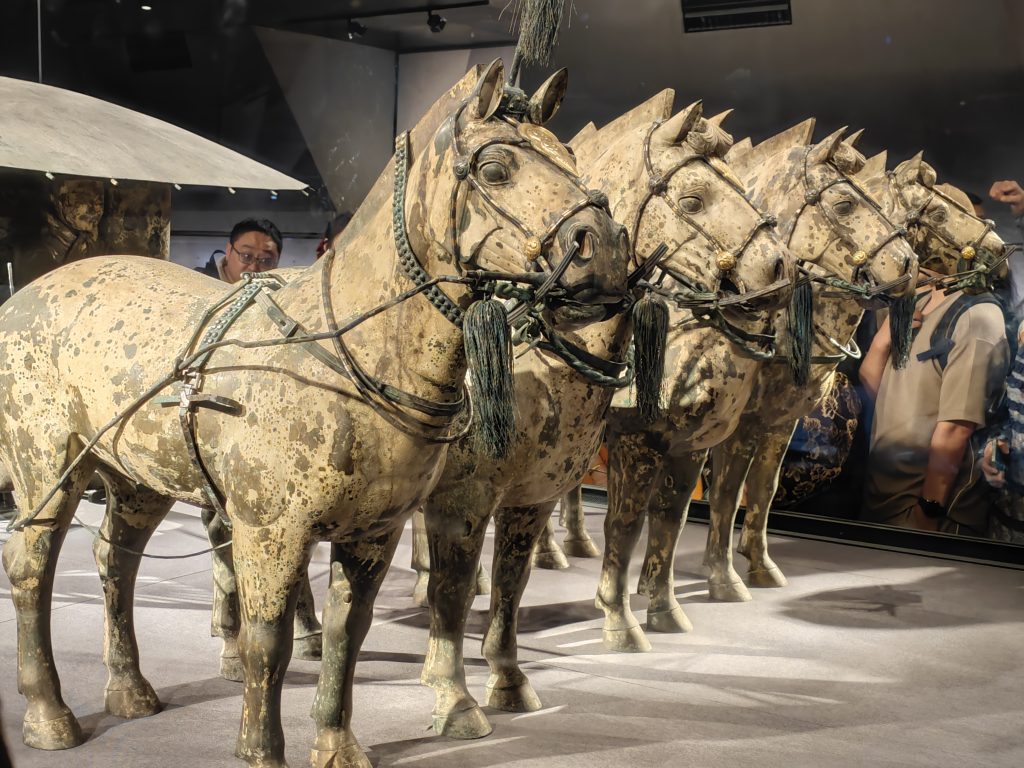
Chariots
The chariots in Terracotta Warriors Pit 2 are made of wood and metal, with detailed carvings and decorations. Each chariot is pulled by a team of four horses, depicted in dynamic poses that suggest movement and speed. The chariots were used for both direct combat and strategic maneuvers, making them a versatile and powerful tool in the Qin army’s arsenal.
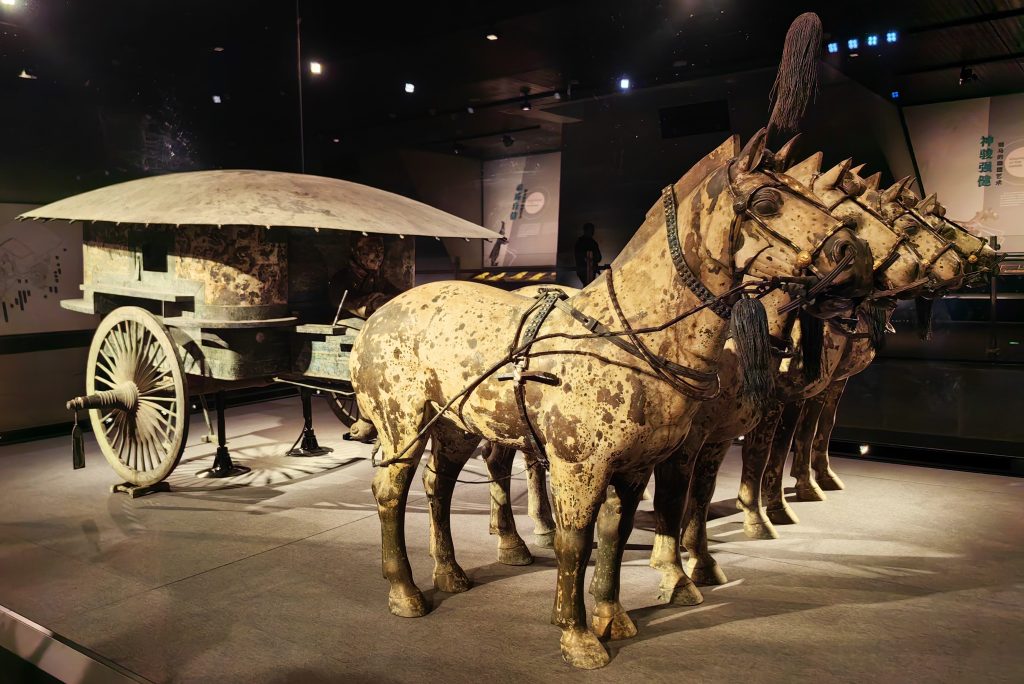
Charioteers
The charioteers in Terracotta Warriors Pit 2 are depicted in various positions, holding the reins and ready to steer the chariots into battle. These figures are detailed and lifelike, showcasing the artisans’ ability to capture the dynamic nature of warfare. The charioteers played a crucial role in the Qin military, providing both offensive and defensive capabilities during combat.
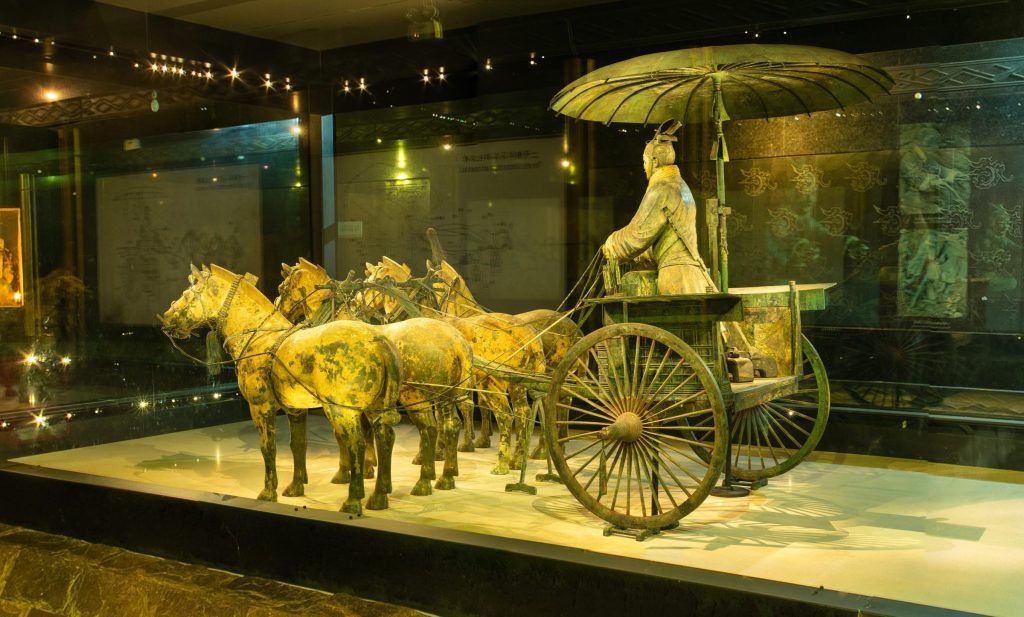
Section 4: The Rear Guard
The fourth section of Terracotta Warriors Pit 2 contains the rear guard, consisting of a mix of infantry and cavalry units. This section is strategically positioned to provide support and reinforcement to the other sections of the pit. The rear guard was essential for maintaining the stability and effectiveness of the Qin army during battles.
Infantry and Cavalry
The infantry and cavalry units in the rear guard are depicted in various stances, ready to provide support and reinforcement during combat. These figures are detailed and lifelike, showcasing the artisans’ craftsmanship. The rear guard played a crucial role in ensuring the stability and effectiveness of the Qin military, providing support and reinforcement to the other sections of the pit.
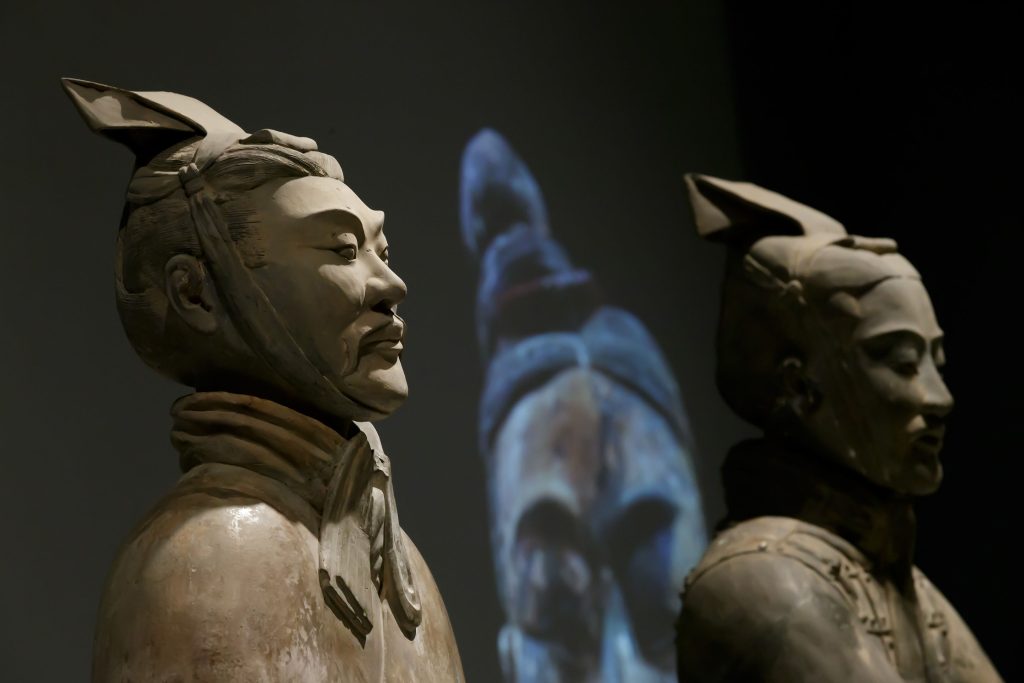
The Craftsmanship and Artistry of Terracotta Warriors Pit 2
The craftsmanship and artistry that went into creating the figures in Terracotta Warriors Pit 2 are nothing short of extraordinary. Each warrior, horse, and chariot is unique, with distinct facial features, hairstyles, and expressions. The level of detail in the armor, clothing, and weaponry showcases the remarkable skill of the artisans who created these figures.
The Creation Process
The creation of the terracotta warriors involved a combination of mass production techniques and individual craftsmanship. The figures were made using a mold-based process, where different parts of the body were molded separately and then assembled. Once assembled, artisans would add unique details and finishing touches by hand, ensuring that no two warriors were identical.
Molding and Assembly
The bodies of the warriors were typically made in sections, including the head, torso, arms, and legs. These sections were molded separately using clay and then assembled to form the complete figure. The joints were carefully crafted to ensure stability and durability. After assembly, the figures were dried and fired in kilns at high temperatures to harden the clay.
Detailing and Finishing
Once the basic structure of the warriors was complete, artisans added intricate details to each figure. This included sculpting facial features, applying textured patterns to the armor and clothing, and attaching accessories such as belts and weapons. The attention to detail in the facial expressions and individual characteristics of each warrior is particularly noteworthy, showcasing the artisans’ ability to capture a diverse range of human features.
Painting and Coloring
Originally, the terracotta warriors were painted in vibrant colors, although much of the paint has faded over the centuries. The figures were coated with a layer of lacquer before being painted with pigments derived from natural minerals. Colors such as red, blue, green, and yellow were used to add lifelike details to the warriors, enhancing their realism and visual impact.
Preservation Challenges
One of the significant challenges in the preservation of Terracotta Warriors Pit 2 is the delicate nature of the original paint. Exposure to air and humidity causes the lacquer and pigments to deteriorate rapidly. Modern conservation efforts aim to stabilize the figures and protect the remaining paint, allowing future generations to appreciate the artistry and craftsmanship of the terracotta warriors.
The Significance of Terracotta Warriors Pit 2
Terracotta Warriors Pit 2 holds immense historical, cultural, and archaeological significance. It provides a window into the military might and artistic achievements of the Qin Dynasty, offering valuable insights into ancient Chinese society and the ambitions of its first emperor.
A Symbol of Imperial Power
The terracotta army was created to accompany Emperor Qin Shi Huang in the afterlife, serving as both a protective force and a symbol of his imperial power. The scale and intricacy of Terracotta Warriors Pit 2 reflect the emperor’s desire to demonstrate his authority and ensure his continued rule beyond death. The terracotta warriors are a testament to the centralized power and resources of the Qin Dynasty, capable of mobilizing thousands of artisans and laborers to create this monumental project.
Insights into Ancient Chinese Warfare
Terracotta Warriors Pit 2 provides valuable insights into the military organization and tactics of ancient China. The arrangement of the soldiers, the diversity of their weaponry, and the presence of different military units offer a detailed picture of how the Qin army operated. This information has been instrumental in understanding the military innovations and strategies that contributed to the unification of China under Qin Shi Huang.
Cultural and Artistic Achievements
The terracotta warriors are a remarkable achievement in both art and craftsmanship. The level of detail and individuality in each figure highlights the advanced techniques and artistic skills of the artisans. The use of mass production methods combined with individualized finishing touches demonstrates a sophisticated understanding of both efficiency and artistry. Terracotta Warriors Pit 2 stands as a testament to the cultural and artistic achievements of the Qin Dynasty.
An Archaeological Marvel
Terracotta Warriors Pit 2 is one of the most significant archaeological discoveries of the 20th century. The excavation and preservation of the site have provided a wealth of information about ancient Chinese society, technology, and art. The ongoing research and discoveries continue to shed light on the complexities of the Qin Dynasty and its impact on Chinese history.
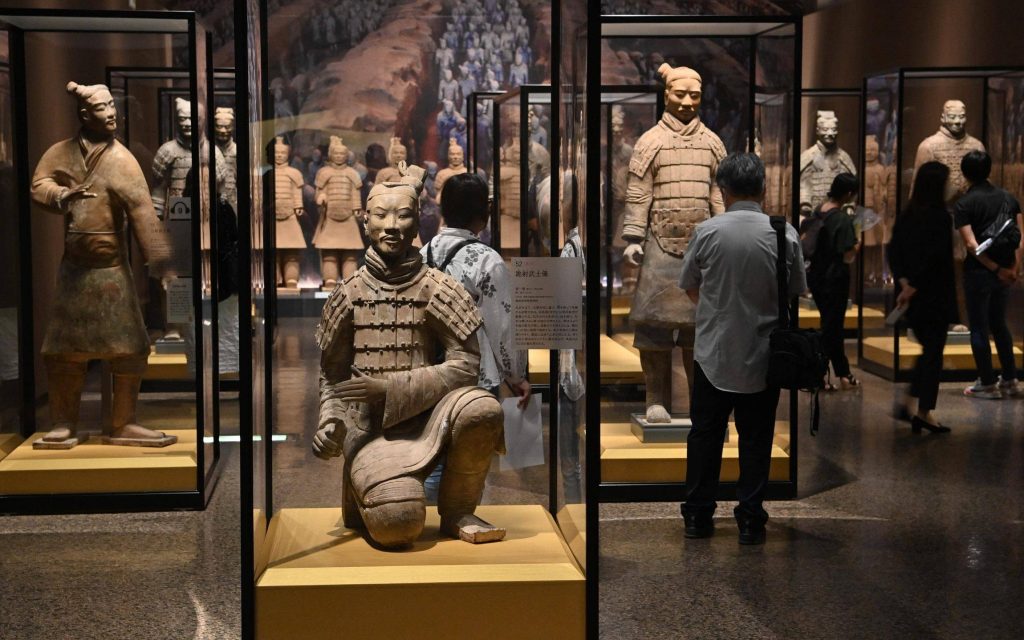
Visiting Terracotta Warriors Pit 2
Terracotta Warriors Pit 2 is one of the most popular tourist attractions in China, drawing millions of visitors each year. The site is part of the larger Terracotta Army Museum, which includes Pits 1 and 3, as well as the Qin Shi Huang Mausoleum. Visiting Terracotta Warriors Pit 2 offers a unique opportunity to witness one of the greatest archaeological finds in history and to gain a deeper understanding of ancient Chinese culture.
The Museum Complex
The Terracotta Army Museum complex is located approximately 40 kilometers east of Xi’an. It covers an area of over 16,300 square meters and includes several exhibition halls, the excavation pits, and the mausoleum of Qin Shi Huang. The museum provides detailed information about the history, discovery, and significance of the terracotta warriors, enhancing the visitor experience.
Exhibition Halls
The exhibition halls at the museum showcase a variety of artifacts related to the terracotta warriors and the Qin Dynasty. These include weapons, tools, pottery, and other items discovered during the excavations. The exhibits provide context and background information, helping visitors appreciate the historical and cultural significance of Terracotta Warriors Pit 2.
Guided Tours and Multimedia Presentations
Visitors to Terracotta Warriors Pit 2 can take advantage of guided tours and multimedia presentations offered by the museum. These tours provide in-depth information about the history, excavation, and significance of the pit, offering a comprehensive understanding of the terracotta warriors. Multimedia presentations, including documentaries and interactive displays, enhance the visitor experience by bringing the ancient history to life.
Preservation and Conservation Efforts
The museum also highlights the ongoing preservation and conservation efforts aimed at protecting Terracotta Warriors Pit 2. Visitors can learn about the advanced techniques used to stabilize and restore the figures, ensuring their preservation for future generations. These efforts are crucial in maintaining the integrity and authenticity of this remarkable archaeological site.
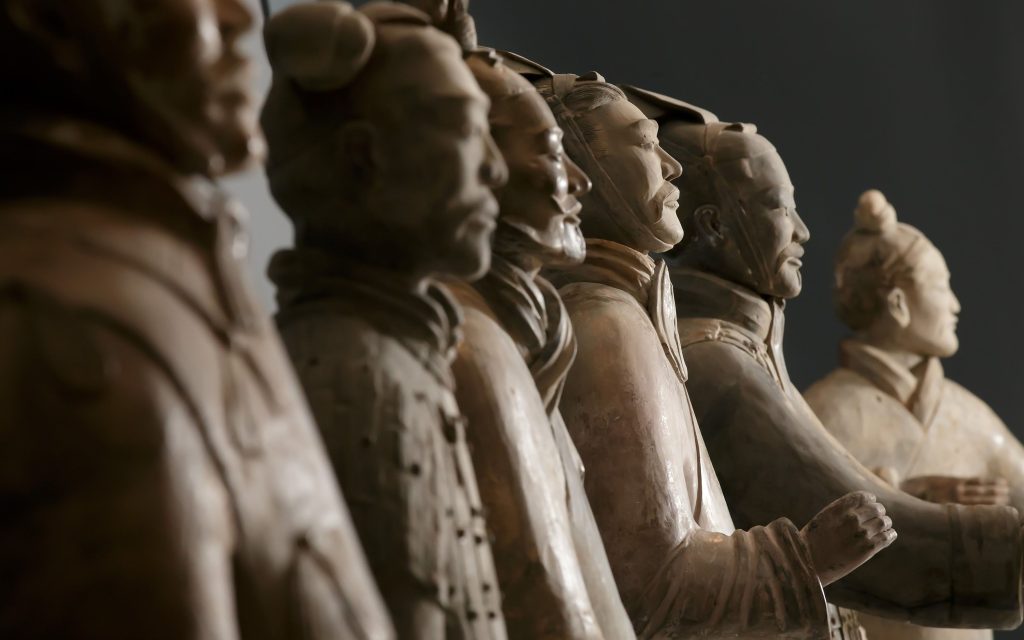
Terracotta Warriors Pit 2 is a testament to the grandeur and sophistication of the Qin Dynasty’s military and artistic achievements. The pit’s discovery, excavation, and preservation have provided invaluable insights into ancient Chinese society and the ambitions of its first emperor. The detailed layout, diverse military formations, and exquisite craftsmanship of the figures in Terracotta Warriors Pit 2 continue to captivate historians, archaeologists, and tourists alike. As one of the most significant archaeological discoveries of the 20th century, Terracotta Warriors Pit 2 remains a vital link to understanding China’s rich and complex history.

